If you're a writer, you know your writing samples need to be on point. Be it a sonnet, short story, or SEO article, you need those pieces that have already delighted readers in their own niche. If you're a freelance writer, this is your bread and butter. How else do you find new clients, gigs & projects?
Believe me, I relate. I've been writing professionally since 2017, and have been freelancing for over a year now. So, I thought I'll research and lay out the best practices for creating freelance writing samples.
These guidelines come from a mix of my own experience & industry expert advice, so think of it as the starting point from which to shape the perfect writing sample to astound your potential clients. Plus, there will be examples from real freelance writers who are already established in their freelance writing career(s).
And, just in case, you're in the market for some extra advice, I'll also discuss how you can create the ideal writing portfolio for your freelance writing examples.
• Tips for adding the right freelance writing samples to your portfolio
• Guidelines for creating writing samples from scratch (if you don’t have relevant published pieces)
• Freelance writing examples to kickstart ideas for your own samples
• Why your freelance writing examples deserve an equally excellent portfolio… and a tool to build said portfolio really easily.
How to create freelance writing samples that showcase your writing skills to the right clients
Most employers want to see examples of published content on your portfolio or freelance writing website.
If you already have a set of such publications, here are some questions you should ask before selecting the ones that go on your portfolio:
Can I add all of them?
Interestingly, the modern employer is no longer satisfied with seeing a few well-written pieces. In the age of constant digital competition, clients are looking for people who do good work consistently. In other words, they want someone who writes great content every week. If you're only showcasing 5 articles written over the last 5 months, you'll miss out on being their first preference.
Add as many writing samples to your portfolio as humanly possible. Unless the piece is truly abysmal, it should be on your portfolio. And, if you're worried about the amount of work it takes to copy/paste/upload, there are portfolio-building tools that do all the work for you (more on that later). Also, these tools will let you organize your portfolio so that it’s easy for a potential client to digest.
Is it targeting my clients' niche?
If you're pitching to a lifestyle client, it's best to show pieces related to the same domain. If you don't have any, consider creating writing samples from scratch. While clients can somewhat gauge your writing style from unrelated writing on different topics, they shouldn't have to sit and wonder how you can transfer your skills to their industry. Instead, they'll just go with whoever shows that they have relevant industry experience.
Is there any content featuring me (instead of being written by me)?
Has any of your work ever been quoted or referred to by another writer, podcaster, or video creator? Include it! Ever done any guest posting? Include it!
The fact that other people are referring to your opinions, or actively soliciting them, shows that you are a true expert in your field. Once again, if you're worried about tracking down all your "mentions," a portfolio builder like Authory will come in handy. It finds these "mentions" for you, so you don't have to spend your time scouring the internet (and possibly regretting everything).
Now, in case you don't have published writing samples, you need to create some.
How to create freelance writing samples from scratch
Focus on the client's industry
You start by looking at the prospective client's industry before deciding what to write on. If you want to pitch to a beauty & lifestyle company, you write something like "Top 10 skincare tips for when you're traveling and jetlagged." If you're pitching to a political think tank, you might want to write an analysis of electoral patterns in Croatia. Look at what the client wants, and give them exactly that.
Throw in some SEO knowledge
The competition to show up on the first page of Google's search results is fierce. In the digital gladiatorial landscape, some knowledge of SEO is a huge advantage. Even if the client is prepared to help writers with SEO guidelines, wouldn't they be doubly impressed if your point out the target keyword for your article? Wouldn't they be even more impressed if you told them how you did your research, even if it's at a rudimentary level with free tools?
Competence with SEO is one of the most desirable skills for a freelance writer. If you're looking to acquire this skill, start with Google's free course.
Pay attention to the title
People's attention spans are low, and everyone is vying for their attention online. Your article's title has to stand out and get people to click on it. A good title is clear, contains a target keyword, and tries to be witty (but doesn't try too hard).
You should be able to get a good idea of the right title (the kind that appeals to the target audience) by doing a simple Google search of your target keyword for the piece.
Keep your word count under control
Your clients have very little time to devote to a single application and portfolio. Don't make life more difficult for them.
Keep your writing samples relatively short. If you're creating it (instead of showing previously published work), try to keep it between 1000-1500 words. 2000 is acceptable for deep dives into technical topics.
Of course, if you see that your client's blog routinely publishes long-form pieces that go beyond 1500-2000 words, feel free to stick to the word count. Clearly, the client likes it.
Edit brutally for errors, plagiarism & readability
Your writing samples should be as pristine as possible. Once you're done with your draft, go through it with a fine tooth comb. Use tools like Grammarly to check for spelling & grammar errors. If you have a paid version of Grammarly you can use its exceptional plagiarism checker. If not, there are plenty of free tools to help you out.
It's also important to keep your article readable to the target audience. Long, complex sentences are usually not reader-friendly (unless you stan for James Joyce). Long paragraphs are heavy on the reader's eyes. If a simpler synonym for a word exists, it should be used over the "heavier" word.
You can use Hemingway to check your article's readability. Try to keep it at Grade 9-10 reading level, unless the client in question is known for welcoming more academic language.
Freelance writing samples to inspire your first one
Final Fantasy XVI Is Still Final Fantasy, With More Blood and Butts by Reid McCarter
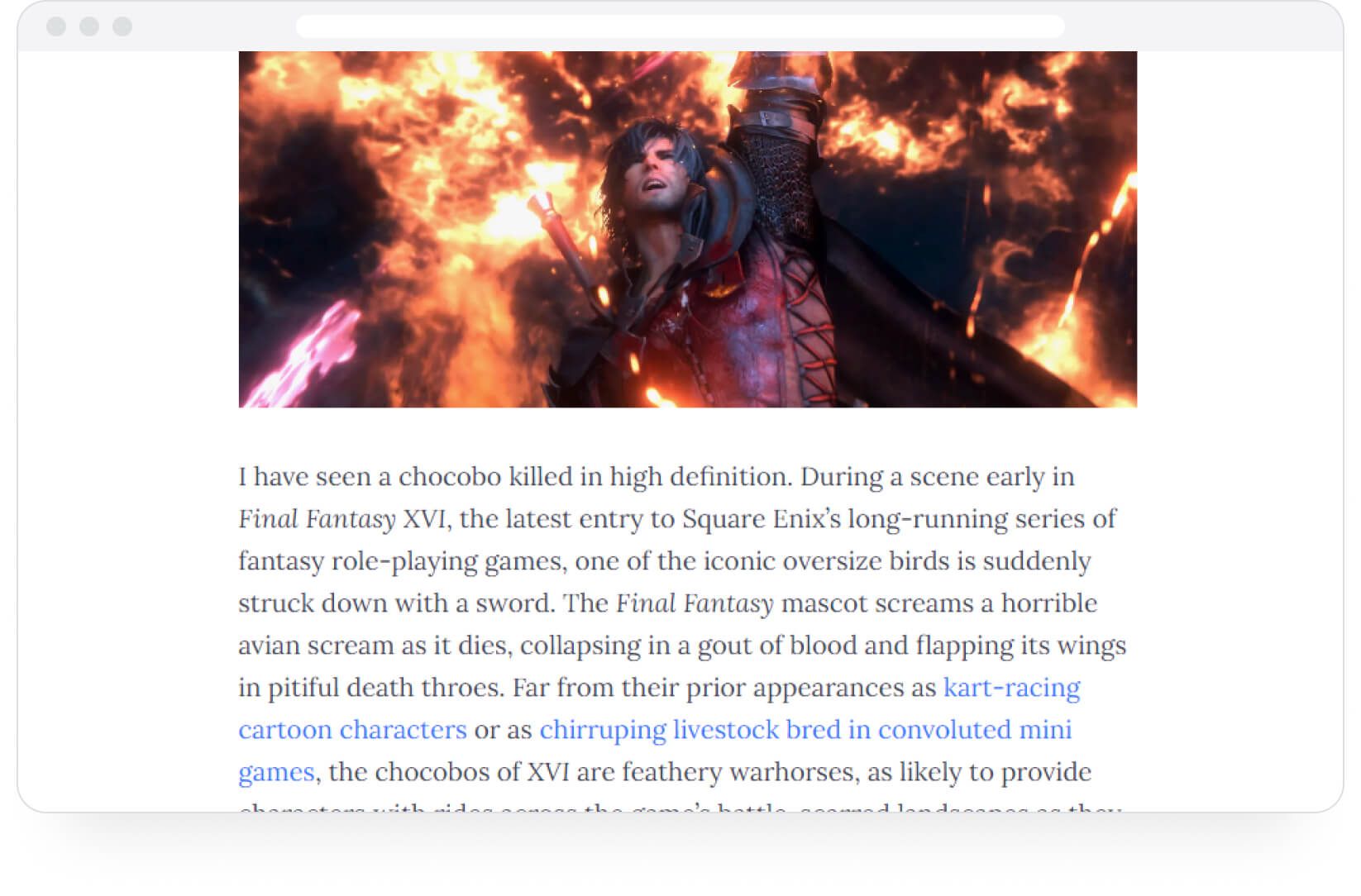
Reid McCarter is a freelance writer and editor with publications in The AV Club, GQ, Kill Screen, Playboy, The Washington Post, Paste, and VICE. He co-founded & co-edits Bullet Points Monthly, co-edits SHOOTER and Okay, Hero, and co-hosts the Bullet Points podcast.
This writing sample of his is a review of the RPG Final Fantasy XVI.
You can read the full review here and browse his freelance writing portfolio here.
The Fashion Grazer by Vicki Reeve
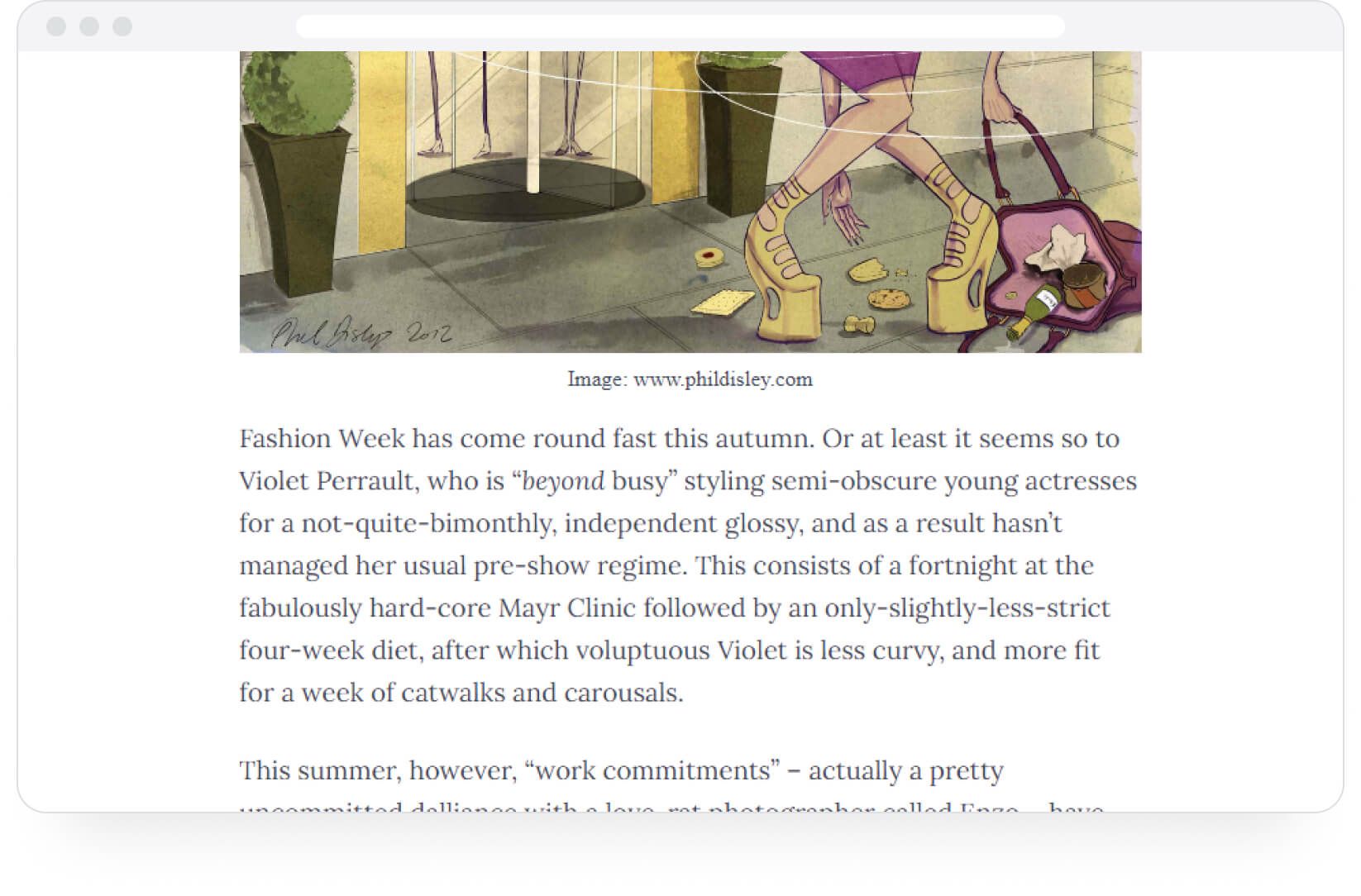
Vicki started out in academic book publishing and moved on to luxury journalism. She has written & edited for FT's How To Spend It magazine, Condé Nast Traveller, Stella magazine at The Telegraph, ES Magazine at the Evening Standard, The Sunday Times (Style and Travel), and Tatler.
As a freelance editor/writer, she works with Departures International, Centurion, Compendium, NetJets magazine, Vogue, Art Fund's Art Quarterly magazine, Elephant magazine, and Wylde, among other publications.
Her freelance writing niche is luxury & lifestyle, but she also writes short stories, one of which is the sample here. It is the very definition of a good writing sample.
And, here's her freelance writing portfolio page.
How to use Canva for Non-profits by Carrie Cousins
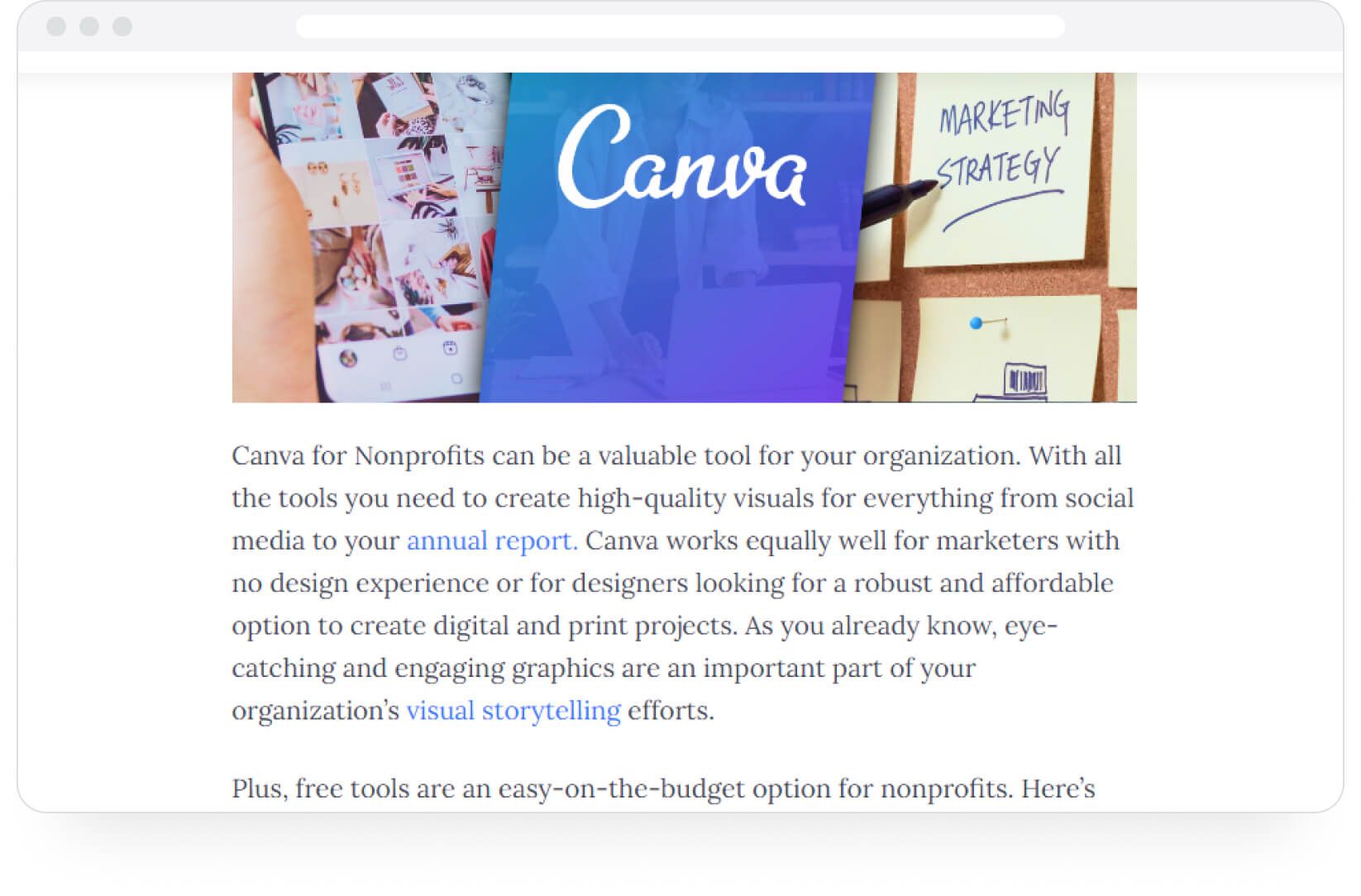
Carrie has 15+ years of experience in media, design, and content marketing with brands operating across the globe. As a freelance writer, she creates content for blogs, informative articles, website or ad copy, and more.
Her freelance writing sample here is a discussion on how non-profits can use the free tool Canva for the best possible results.
Here's the full article & her freelance writing portfolio.
Addressing security gaps with risk-based vulnerability management by Clair Belmonte
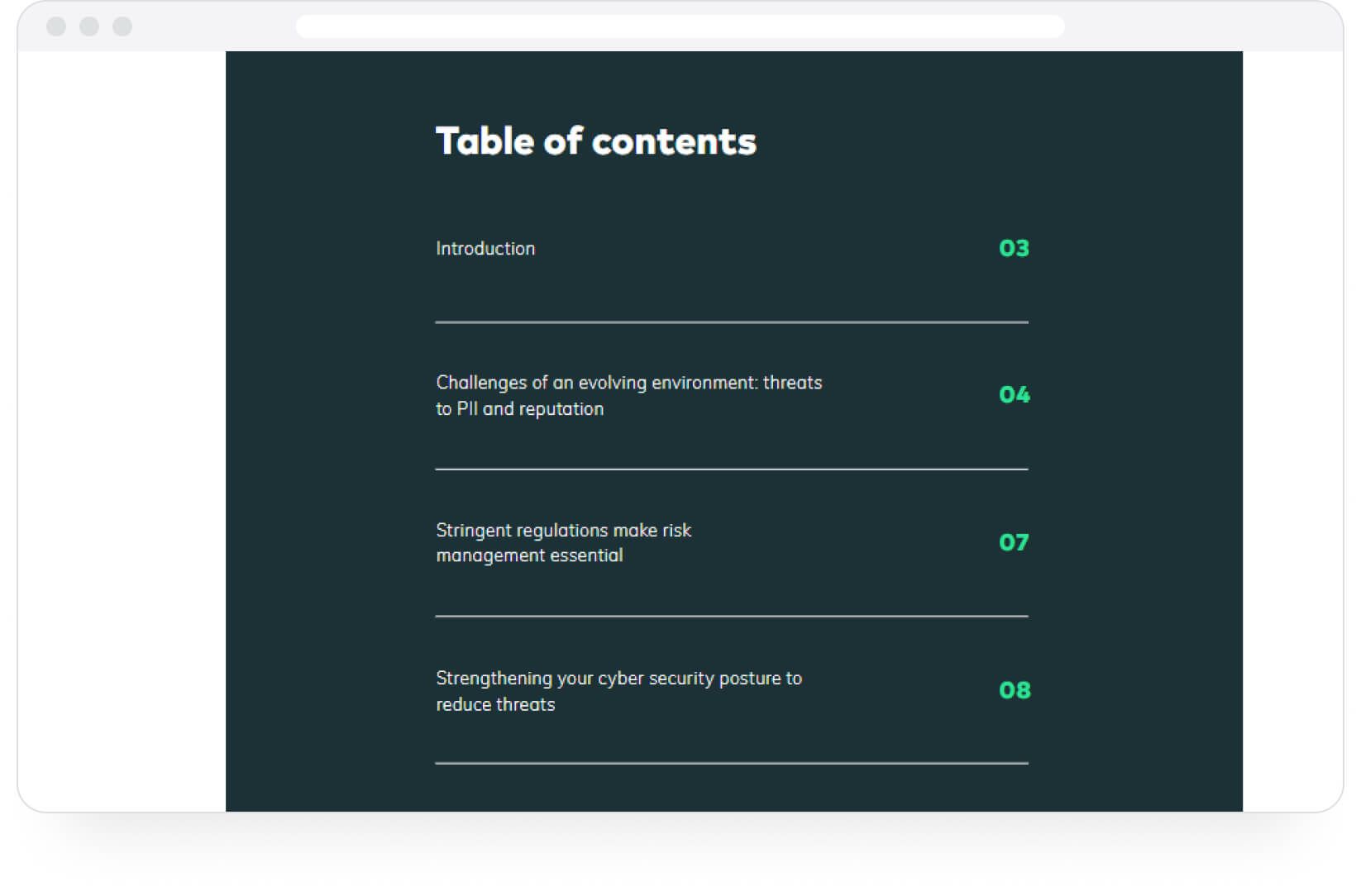
Clair is a freelance writer, editor, and content strategist. Her freelance writing portfolio showcases her areas of interest as B2B tech, SaaS, cybersecurity, data management, AI/ML, and compliance.
The sample highlighted here delves into fortifying data security for organizations by using something called vulnerability management.
Here's her full article & her portfolio.
Using Authory to build your freelance writing portfolio
The examples above have a couple of things in common. One, they're really well-crafted. Two, they're part of a sophisticated, industry-best portfolio page — the kind that helps their authors get freelance writing jobs consistently.
The importance of the portfolio cannot be overstated, especially in the freelance writing business. In case you're thinking about upgrading your existing portfolio, or creating your first one, allow me to suggest Authory as that portfolio builder.
Authory has the following advantages:
A self-updating portfolio (no need to keep adding new work manually)
Authory will AUTOMATICALLY import a copy of every bylined piece from every site into its own database. These sites are called "sources." You add as many sources as you want, and every single bylined piece from every single source will be imported automatically.
You don't have to track down links to your published work (especially older pieces). As long as you remember the URL of the site where your work exists, Authory will collate all your content for you in one dashboard.
Authory can import content from behind most soft paywalls (as long as it is a bylined piece) and some hard paywalls. However, it cannot be used to import copies of articles, podcasts, and videos you haven’t created or featured in.
There isn’t any need to manually upload/copy-paste your content. That said, if you happen to have any non-bylined content, you can always do so manually in those cases.
Automated backups (never lose your content, ever)
All the content that Authory imports from different sources is saved permanently. You'll never have to worry about losing any of your published work. Even if the original website where it's published goes defunct for any reason, you'll always have a copy safely stored on Authory's server.
All backups are in the original format — text and/or media. No screenshots. This is super important because it lets you search through your content database, making it a valuable research tool.
Continued importing of past and future content (less effort for a 100% updated portfolio)
Once you enter a source, Authory won't just import your existing publications. Anything you publish on the same site (after you've fed its URL into Authory) in the future will also be imported automatically. In other words, Authory will import your past and future content.
Authory also sends email notifications for every new piece it imports, so you'll always know if something you submitted has been published.
Many Authory customers have also observed that Authory notifications reached their inboxes faster than Google Alerts.
Collections for easy organization (easy site navigability)
Once Authory imports your content, you can put each piece into folders called "Collections" right within your dashboard. Select the pieces that go into each Collection, name these "Collections," and add them to your portfolio with a single click.
On your Authory portfolio, you'll see that these "Collections" show up as headers. They become the categories under which your content is organized, making your portfolio easier to navigate instantly.
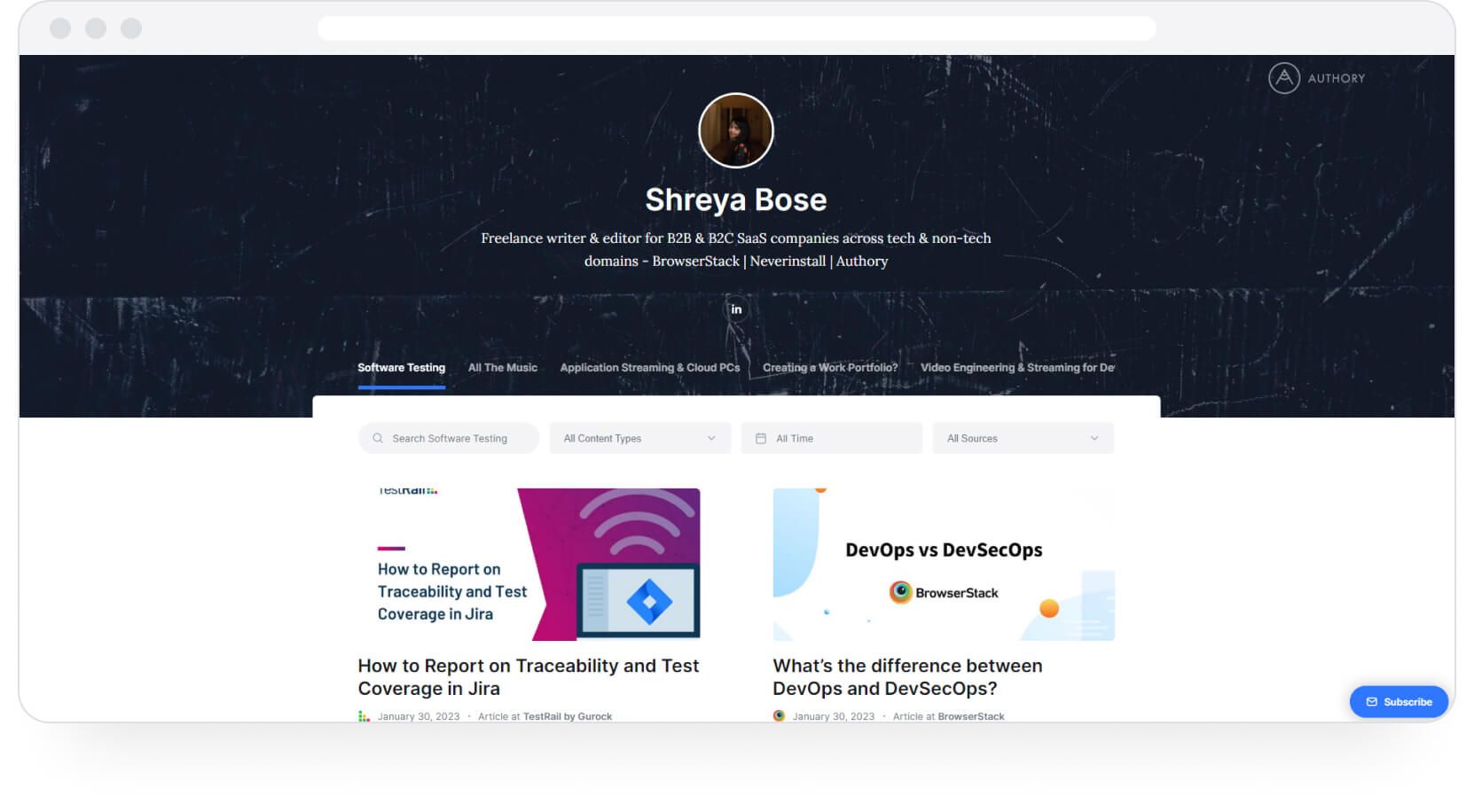
In my case, the Collections I create simply separate articles based on domains: Software testing, All The Music (music journalism), Application Streaming & Cloud PCs, Creating a Work Portfolio (for my Authory pieces), and Video Engineering & Streaming for Devs.
I added each of my Collections to my portfolio with a single click, and as you can see, they serve as the headers someone can click to narrow down the topics they want to explore.
Analytics, tracking, newsletter, RSS, & more
Authory doesn't just provide a digital space to display your work. You also get ancillary features like:
- Ability to search through both your portfolio and your content database to find content based on keywords. Prospective employers can use this to look for topics on your portfolio, and you can use it to find specific pieces within your Authory content bank.
- All imported content can be downloaded as high-res PDFs or exportable as HTML files — no lock-in period.
- No separate web hosting charges.
- Get a custom domain and further personalize your portfolio (no extra charge).
- Multiple, low-effort options for customization to make your portfolio visually appealing and easy to navigate.
- Allows creation of newsletters with a couple of clicks. After setup, Authory will automatically send your newly published content to subscribers.
- Widgets to display your personal portfolio on other sites, such as your personal website (if you have one).
If you’re curious, sign up for a free Authory account. Try the 14-day trial, set up a self-updating portfolio within minutes, access all your work in one place, and be assured that you’ll never lose any of your work again. See if it makes your life easier like it did for mine.




